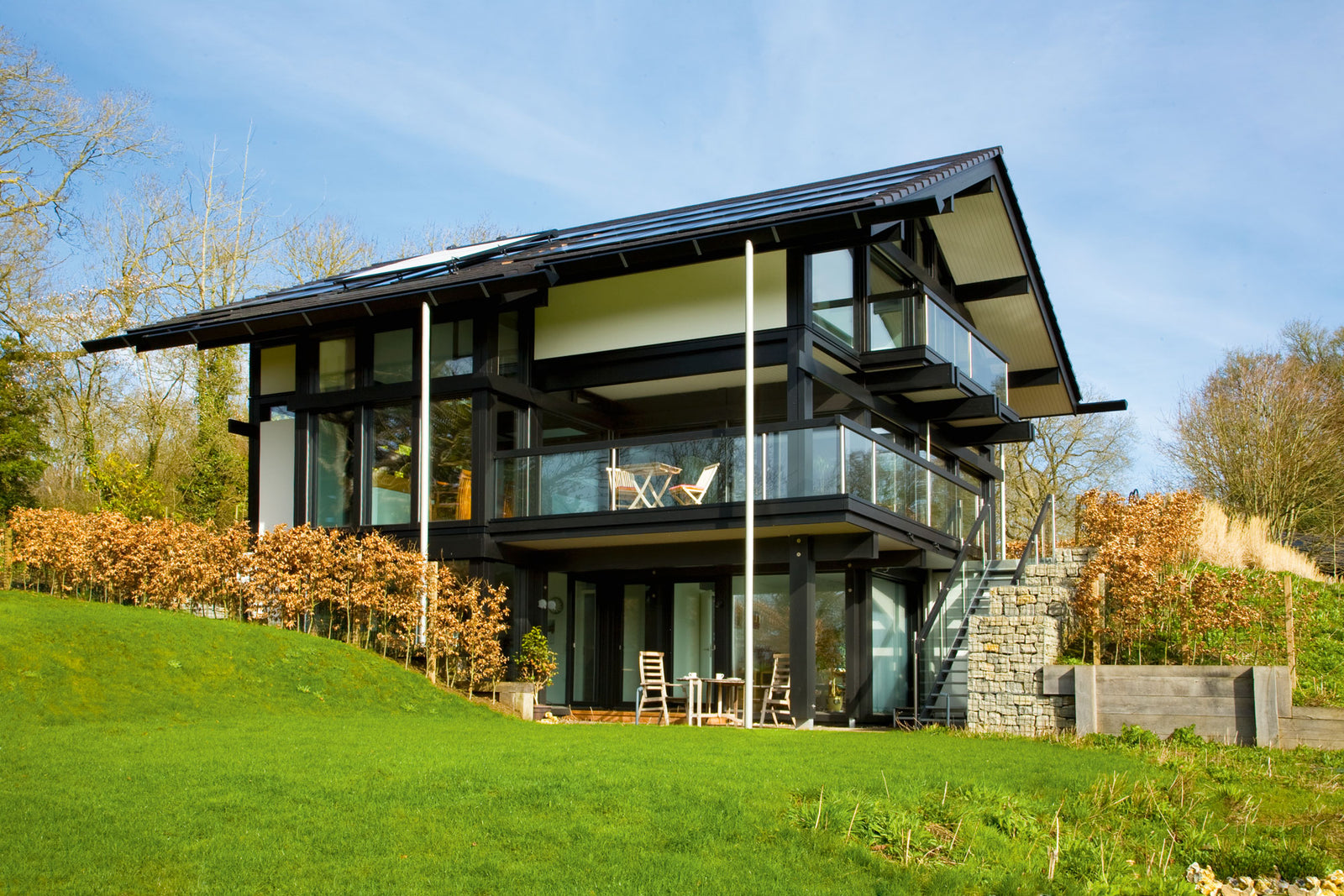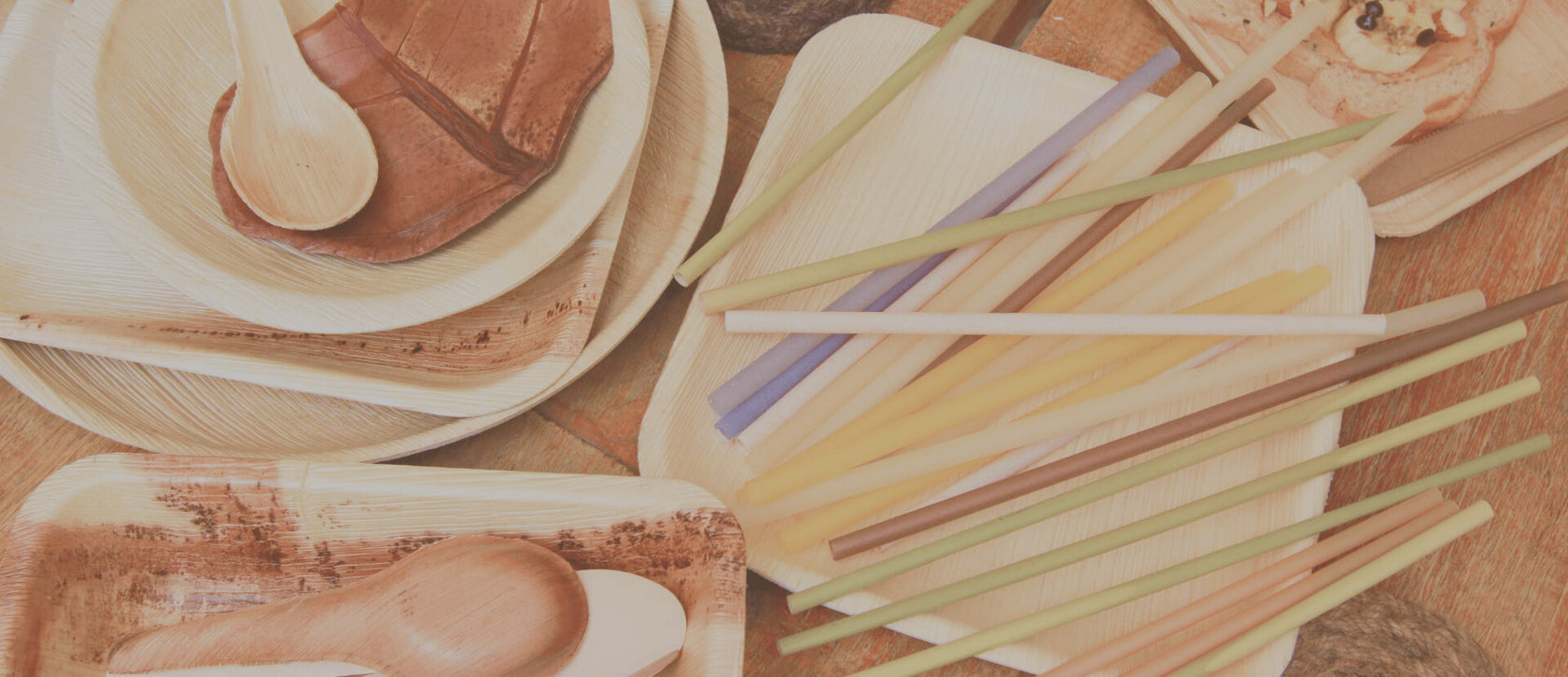The earth is warming up, environmental pollution is increasing, and people are facing many health and natural resource problems. In that context, ecological houses are gradually becoming a new trend, of interest and choice to many people.
So what is an ecological house? What are the benefits of an ecological house? What are the popular forms of ecological houses? Let's find out with EQUO!
1. What is an ecological house?
An ecological house is a housing model with a low impact on the environment, designed and built with materials and technology that help reduce carbon emissions and energy consumption. Ecological houses are designed in many ways to meet sustainability needs such as saving water, reducing waste through reusing and recycling materials, controlling pollution to limit global warming, manufacturing and saving energy as well as reducing CO2 emissions.

Source: Internet
>> Read More:
- 10 Easy Tips On How To Live A Green Lifestyle
- Environmental Protection - What Is It and How To Protect It?
- How To Live Sustainably: 5 Tips To Be More Sustainable In Everyday Life
- Best Ways To Easily Reduce Your Carbon Footprint
- 10+ Alternative Materials to Plastic: Perfect Solutions for the Environment and Humanity
2. Characteristics of ecological houses
In the current era, ecological houses are becoming a popular trend not only because of environmental protection but also because of the economic and health benefits they bring. Below are the main features of ecological houses:
2.1. Building materials
Ecological houses are often built from recycled or natural materials such as wood, stone, clay, recycled concrete, recycled sand, and many other materials. Using these materials not only helps reduce the amount of waste in the environment but also helps minimize the home's impact on the environment.

Source: Internet
2.2. Energy efficiency
One of the important characteristics of an ecological house is energy efficiency. They are often designed with good insulation, using natural light and solar power systems to optimize energy use. In addition, energy-saving devices such as LED lights, air conditioners, and heaters are also integrated into the house to reduce electricity consumption.

Source: Internet
2.3. Save water
Ecological houses not only use environmentally friendly materials but also focus on saving water. Water-saving devices such as showerheads and water-saving flushing toilets are commonly used. Rainwater collection and reuse systems are also installed to water plants and gardens. Thanks to this, the amount of daily water use is significantly reduced, contributing to protecting water sources and maintaining environmental sustainability.

Source: Internet
2.4. Minimize waste
Ecological houses not only focus on efficient energy use and water conservation but also aim to reduce waste. To achieve this goal, people often use recycled and reused products and minimize the use of materials that pollute the environment. Thanks to that, ecological houses not only provide a sustainable living environment but also contribute to protecting the global environment.

Source: Internet
In today's context, building and using ecological houses is not only a trend but also a necessity. More than just a place to live, an ecological house represents a sustainable and environmentally responsible lifestyle.
3. Benefits of ecological houses
When you choose to build an ecological house, you are not only contributing to environmental protection but can also enjoy a range of economic and personal health benefits. Here are the important benefits of ecological houses:
3.1. Cost savings
Although it may create a higher initial cost than building a conventional house, an ecological house will save you a lot of money in the long term. With an energy-saving system, you can reduce your monthly electricity bill. Using water-saving devices also helps reduce water costs. Furthermore, sustainable and recycled building materials help reduce future maintenance and repair costs.

Source: Internet
3.2. Improve health
Ecological houses are often designed to optimize airiness and natural light, as well as minimize the use of toxic substances in construction materials, creating ideal living conditions and helping to improve quality. indoor air and reduce the risk of health problems such as allergies and respiratory diseases.

Source: Internet
3.3. Environmental protection
The biggest benefit of owning an ecological house is the contribution to environmental protection. Using sustainable building materials, saving energy and water, and minimizing waste all help reduce emissions and negative impacts on the natural environment. This contributes to protecting resources and keeping our planet greener and cleaner for future generations.

Source: Internet
Thus, an ecological house is not only a place to live, but also a symbol of an understanding and responsible way of life. When choosing to build an ecological house, you not only enrich your life but also contribute to protecting the environment and the future of the planet. Let's join hands to build a more sustainable future by choosing an ecological house for your family!
4. Popular forms of ecological houses
When it comes to ecological houses, there are many different styles and forms developed to meet the needs of families and individuals who want to live sustainably and environmentally friendly. Below are some popular forms of ecological houses:
4.1. Passive homes
These houses are designed to make the most of natural energy from sunlight and environmental temperature. Thermal and sound insulation systems are integrated to keep the house warm in winter and cool in summer without using much energy.

Source: Internet
4.2. Zero carbon homes
This is the type of house whose day-to-day operations cause no carbon emissions or have very low carbon emissions. This is often achieved through the use of renewable energy sources such as solar or wind power, along with the use of environmentally friendly construction materials.

Source: Internet
4.3. Earthships
Earthships are a type of house built from natural materials such as earth bricks, clay, and recycled materials such as old tires. They often have innovative living space shapes and use solar power and rainwater harvesting systems.

Source: Internet
4.4. Straw bale homes
This house is built from barley grass covered in insulation. This material is not only a renewable source but also has good thermal insulation properties, helping to keep the house warm in winter and cool in summer.

Source: Internet
4.5. Rammed Earth
Rammed Earth is a traditional construction method that uses compacted soil and gravel to create wall panels. This is a sustainable construction method with a low carbon footprint and a natural layer of insulation.

Source: Internet
4.6. Prefabs
Prefab is short for "pre-fabricated", which means parts of the house are pre-fabricated in a factory and then assembled at the construction site. Prefab homes are often designed to be energy-efficient and easy to assemble.

Source: Internet
4.7. Tiny homes
Tiny homes are compact houses, designed to optimize space and minimize the amount of resources needed for each person. Tiny homes often use renewable energy and are portable to minimize their impact on the environment.

Source: Internet
With such diverse options, choosing an ecological house that suits your needs and lifestyle not only brings a sustainable living space but is also a meaningful contribution to protecting the environment. environment and the future of our planet.
Join hands with EQUO - A sustainable brand for a green life
EQUO is a pioneering Vietnamese brand in the field of manufacturing and providing alternative products to disposable plastic. With the mission "Joining hands to protect the environment, aiming for a green life", EQUO is committed to providing customers with high quality, environmentally friendly products, and reasonable prices.
EQUO products are made from 100% natural materials, do not contain plastic, and can biodegrade within 3-6 months:
- Plant-based straw set that decomposes itself: Made from coffee, bagasse, coconut, grass, and rice, safe for health, and completely compostable in the natural environment.
- Food containers: Made from sugarcane bagasse, which is a sustainable natural resource that is renewable and decomposes quickly. The outstanding characteristics of bagasse fiber lie in its durability, flexibility in packaging, and breathable and waterproof qualities.
- Utensils: This is a great choice for eco-friendly and durable tableware sets.
- Paper cups and lids with water-based coating: Using a water-based coating, instead of plastic (PP, PE, or PLA), helps the production process emit less carbon dioxide (CO2) and minimizes negative impacts on the environment during decomposition compared to regular paper cups. These cups completely decompose in the natural environment within 18 weeks and come in various sizes, suitable for a wide range of uses.
Let's join hands with EQUO to use environmentally friendly products. For more information about EQUO product lines, please visit the following link:
>> https://shopequo.com/collections

An ecological house not only gives you an environmentally friendly, cost-saving living environment but also contributes to protecting the community's general environment. It is not only a place to live but also a symbol of a smart, economical, and responsible lifestyle for our planet. So let's take action with EQUO, from choosing construction materials to using renewable energy and saving resources every day, so we can build green homes - places that are more than just places to live. but also an inspiration for a life full of meaning and responsibility. Start your journey with an ecological house and immerse yourself in the green wave of the future!



3 comments
A well-articulated piece on ecological houses! The insights on sustainability and eco-friendly choices are truly inspiring. Thanks for sharing!
Great article on building an ecological house! The tips provided are insightful and encourage sustainable living. Thanks for sharing such valuable information!
Insightful read on ecological houses! This blog highlights how sustainability and comfort can go hand in hand. Great inspiration!